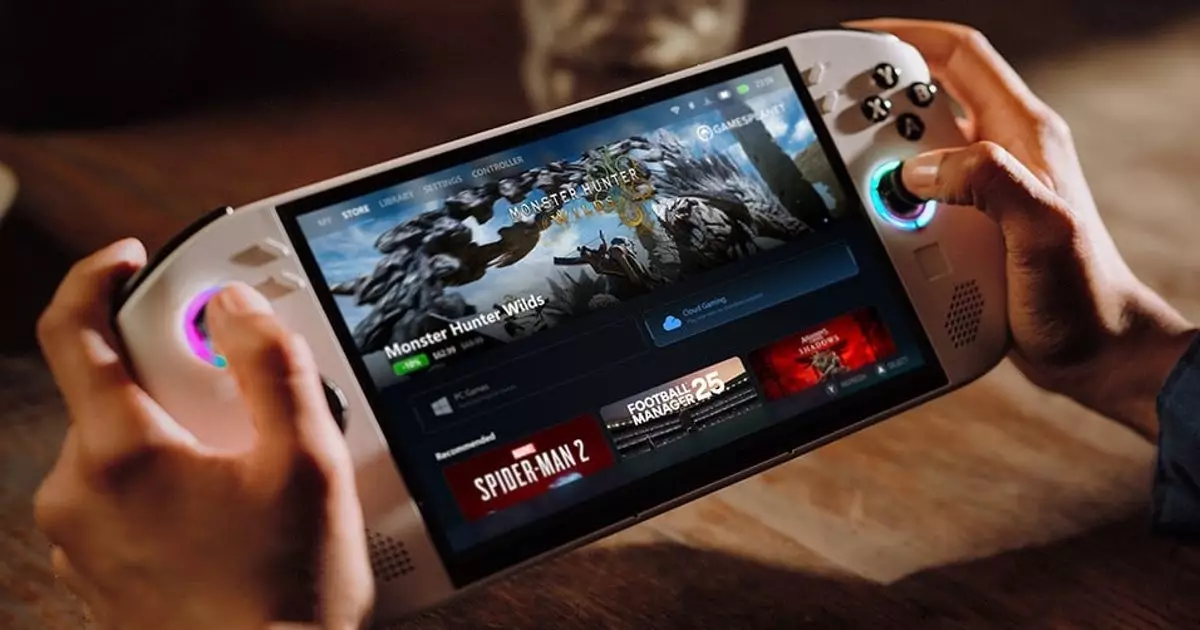For avid gamers, especially those who have invested in the innovative Steam Deck, the quest for compatible titles often begins with a visit to the Steam store. The anticipation of seeing that reassuring green tick next to a game title—signifying its full operational capacity on the handheld device—reveals the underlying hope and anxiety that accompany each new purchase. Valve’s Steam Deck Verified program has become not just a feature, but a lifeline for users looking to navigate the expansive library of games available on the platform. However, an exciting transformation is on the horizon that promises to broaden the scope of this compatibility assurance.
Expanding the Definition of Compatibility
The announcement of an extended version of the Steam Deck Verified program reveals a strategic pivot towards a broader understanding of game compatibility across multiple devices running SteamOS. With the upcoming launch of the Lenovo Legion Go S—a new contender in the portable PC arena—Valve is taking the initiative to ensure that gamers have a clearer perspective on which titles will work smoothly beyond the confines of the Steam Deck itself. The ambitious move aims to classify games as either SteamOS Compatible or Unsupported, granting players a more comprehensive glimpse into which games are feasible for their handheld adventures.
The Implications of Compatibility Ratings
The ramifications of these new compatibility ratings cannot be overstated. Imagine scanning through thousands of titles, now marked with a simple blue tick that instantly tells you which games are safe to dive into on various devices. This system enhances the user experience tremendously, removing much of the guesswork and frustration that has characterized playing on an open-source operating system. It also acts as a beacon for developers; with over 18,000 titles expected to be marked compatible from launch, the push towards optimizing games for SteamOS could encourage more developers to prioritize this platform, benefiting users and creators alike.
SteamOS vs. Windows 11: A New Era of Usability
Recent trends suggest that as more manufacturers contemplate shifting to SteamOS, including the Legion Go S, the dynamics within the portable gaming market are evolving. While Windows 11 holds a significant place in the gaming ecosystem, users have discovered that SteamOS offers significant advantages—among them usability, lightweight operation, and impressive stability. This positions SteamOS as not just another option, but as a serious competitor, tempting developers and gamers looking for a smoother, more streamlined gaming experience.
The Challenges Ahead: Compatibility Performance Considerations
However, it’s essential to approach this optimism with a pinch of realism. While the new categorization will undoubtedly assist players in navigating compatibility issues, it’s crucial to note that the ratings don’t currently take into account the intricacies of frame rates or control input functionality, unlike the original Steam Deck ratings. This opens up potential gaps in user experience which could dissuade gamers from fully embracing the SteamOS platform if they feel that performance quality lacks attention. Critical titles like Apex Legends, which abandoned Linux support, remind us that nothing is ever set in stone. A comprehensive solution must address both compatibility and performance if the initiative is to be truly successful.
The Future of Handheld Gaming: Innovation on the Horizon
Looking ahead, the possibilities are tantalizing. As Valve hints at further expansion of the SteamOS ecosystem, a range of devices with varying specifications may emerge, each offering unique user experiences. This could lead to a renaissance in portable gaming, as manufacturers seek to place their own unique stamp on this versatile OS. The leaked Asus ROG Ally 2, which appears deeply integrated into Microsoft’s ecosystem, illustrates the dual-edged nature of this transition. While some manufacturers might decide to stick with familiar paths, Valve’s commitment to fostering a community around SteamOS should encourage innovation and diversity within the handheld market.
In this evolving landscape of portable gaming, it’s not merely about choosing between two operating systems; it’s about embracing a new era where SteamOS could become synonymous with fun, accessibility, and a broader gaming community. As we eagerly anticipate these changes, one fact remains certain: the future of handheld gaming is bound to be as dynamic as its players.

